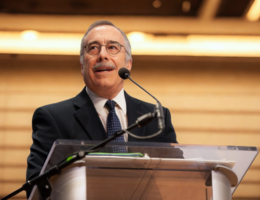

Diabetes is a chronic condition that affects how the body manages blood sugar. There are two primary types: Type 1 and Type 2.
Type 1 Diabetes: An autoimmune condition, typically diagnosed in childhood, where the beta cells do not produce insulin. This requires a person to give themselves insulin shots for their entire life.
Type 2 Diabetes: More common in adults, this type involves insulin resistance, where the body produces insulin but cannot use it effectively, or the pancreas doesn’t produce enough insulin. Some research shows that by the time Type 2 diabetes is diagnosed, up to 50% of the cells are already not working. Type 2 progresses over time, often causing blood sugar to build up in the bloodstream, which can damage blood vessels, especially in organs like the eyes and kidneys.
Additionally, prediabetes –– the precursor to Type 2 Diabetes –– happens when there is insulin resistance, but sugar levels in the bloodstream are not high enough to be considered Type 2 diabetes. This is becoming dangerously common, with the Centers for Disease Control and Prevention reporting that more than 1 in 3 American adults have prediabetes, and more than 8 in 10 adults with prediabetes don’t know they have it.
Karen Studer, MD, chair of the Department of Preventive Medicine, provides the following lifestyle changes for individuals with any form of diabetes, including prediabetes.
1. Eliminate all sugary beverages
One of the most effective and important ways to manage blood sugar is to eliminate sugary drinks from your diet. This includes:
-
Sodas
-
Fruit juices such as orange, apple, and grape juice
-
Sports drinks
-
Energy drinks
-
Coffee sweetened with syrups, sugars, or creamers
-
Milkshakes
-
Alcohol
Even beverages that seem healthy, like fruit juice, can cause rapid blood sugar spikes because they’re packed with concentrated sugars without the fiber found in whole fruit.
Instead of drinking surgery beverages, Studer suggests the following alternatives:
-
Water: Plain or sparkling
-
Fruit-infused water: Adding fresh fruit can add flavor without excess sugar
-
Unsweetened tea: As long as you skip the sugar and cream, tea is a good choice
2. Exercise after eating
There are two primary ways for glucose to enter cells: insulin or physical activity. Studer explains that physical activity is crucial for managing blood sugar levels, especially after meals.
“After eating, light exercise can mimic insulin’s effect by opening cells for glucose to enter,” Studer says. “For people with prediabetes or diabetes, if they do some form of exercise after eating, even if it’s just walking, it will open the cells for the sugar to go into, which reduces the amount of sugar left in the bloodstream.”
Read: The power of walking: steps to better health
3. Consider eating only two meals a day
For some people –– specifically those not on insulin –– Studer says that reducing daily meal frequency from three to two may improve blood sugar control. A controlled diabetes study found that eating fewer, larger meals, such as breakfast and lunch, can be beneficial for people with Type 2 diabetes.
However, this approach may not be suitable for everyone. If you are taking insulin or other medications that lower blood sugar, consult your doctor first to ensure that this change is safe for you.
4. Reduce saturated fats and processed foods
Saturated fats and processed foods worsen insulin resistance and contribute to high blood sugar levels. Saturated fats, such as red meat, full-fat dairy products, and fried foods, can raise cholesterol levels, increasing the risk of heart disease — a common complication in people with diabetes.
Processed foods, such as fast food, frozen meals, and candy, are often high in refined sugars and unhealthy fats, which can cause rapid spikes in blood sugar, making it harder to maintain stable glucose levels.
Studer recommends eating a whole food, plant-based diet. Whole foods not only help improve insulin sensitivity and blood sugar control, but this eating pattern can potentially put prediabetes into remission.
If you have diabetes or prediabetes, The Loma Linda University Health Diabetes Treatment Center is recognized by the American Diabetes Association for providing up-to-date and accurate patient self-management education to persons with diabetes. If you haven’t been screened for diabetes, schedule an appointment to assess your risk factors and take the necessary steps toward prevention.


